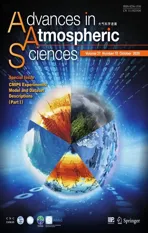Electronic Supplementary Material to:Differences between CMIP6 and CMIP5 Models in Simulating Climate over China and the East Asian Monsoon *
2020-09-07DabangJIANGDanHUZhipingTIANandXianmeiLANG
Dabang JIANG, Dan HU, Zhiping TIAN, and Xianmei LANG
1Institute of Atmospheric Physics, Chinese Academy of Sciences, Beijing 100029, China
2CAS Center for Excellence in Tibetan Plateau Earth Sciences, Beijing 100101, China
3University of Chinese Academy of Sciences, Beijing 100049, China

Table S2. Normalized CRMSEs for the interannual variability of annual and seasonal temperatures over China in the 25 CMIP5 GCMs and their CMIP6 successors.
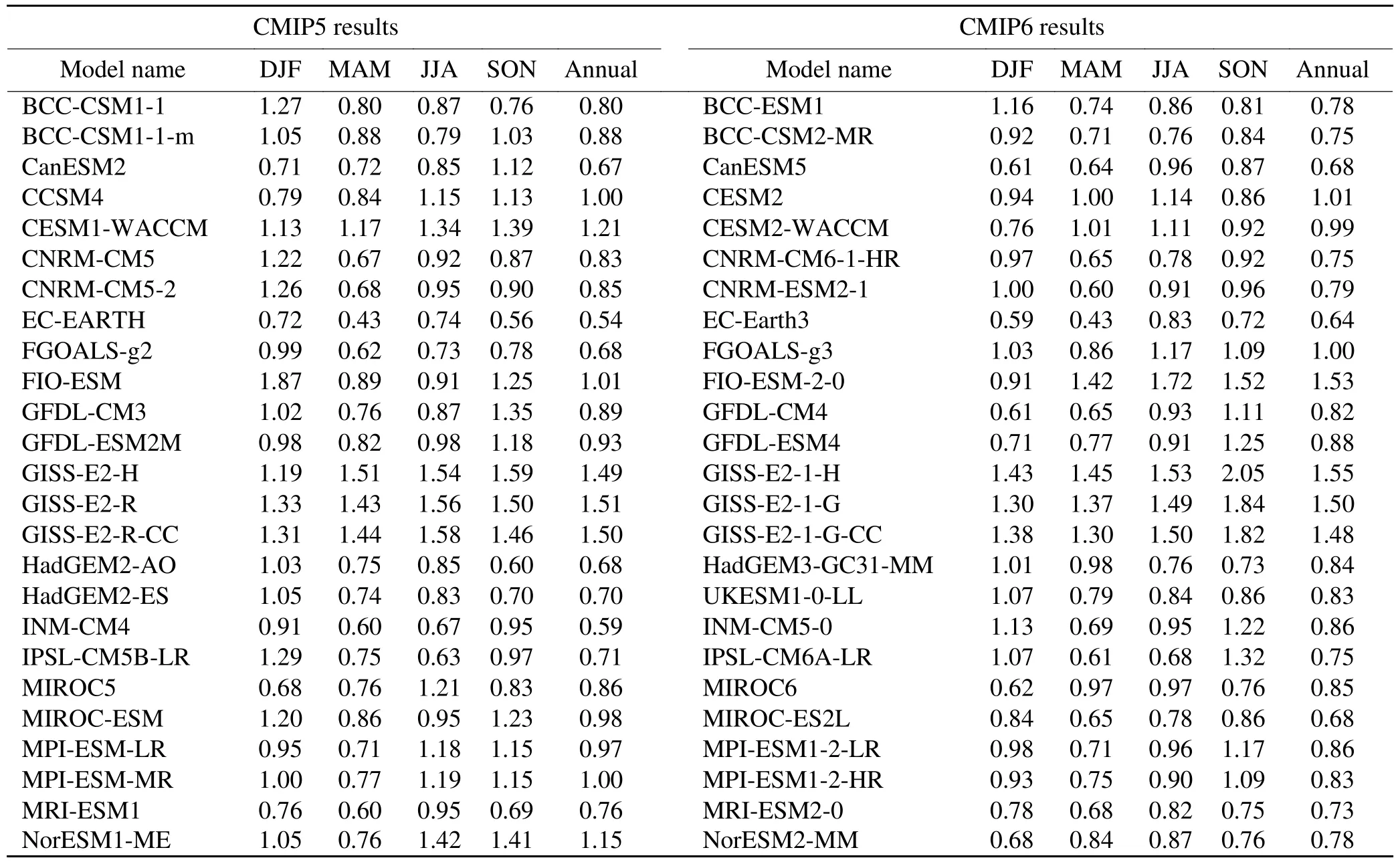
Table S3. Normalized CRMSEs for climatological annual and seasonal precipitation over China in the 25 CMIP5 GCMs and their CMIP6 successors.
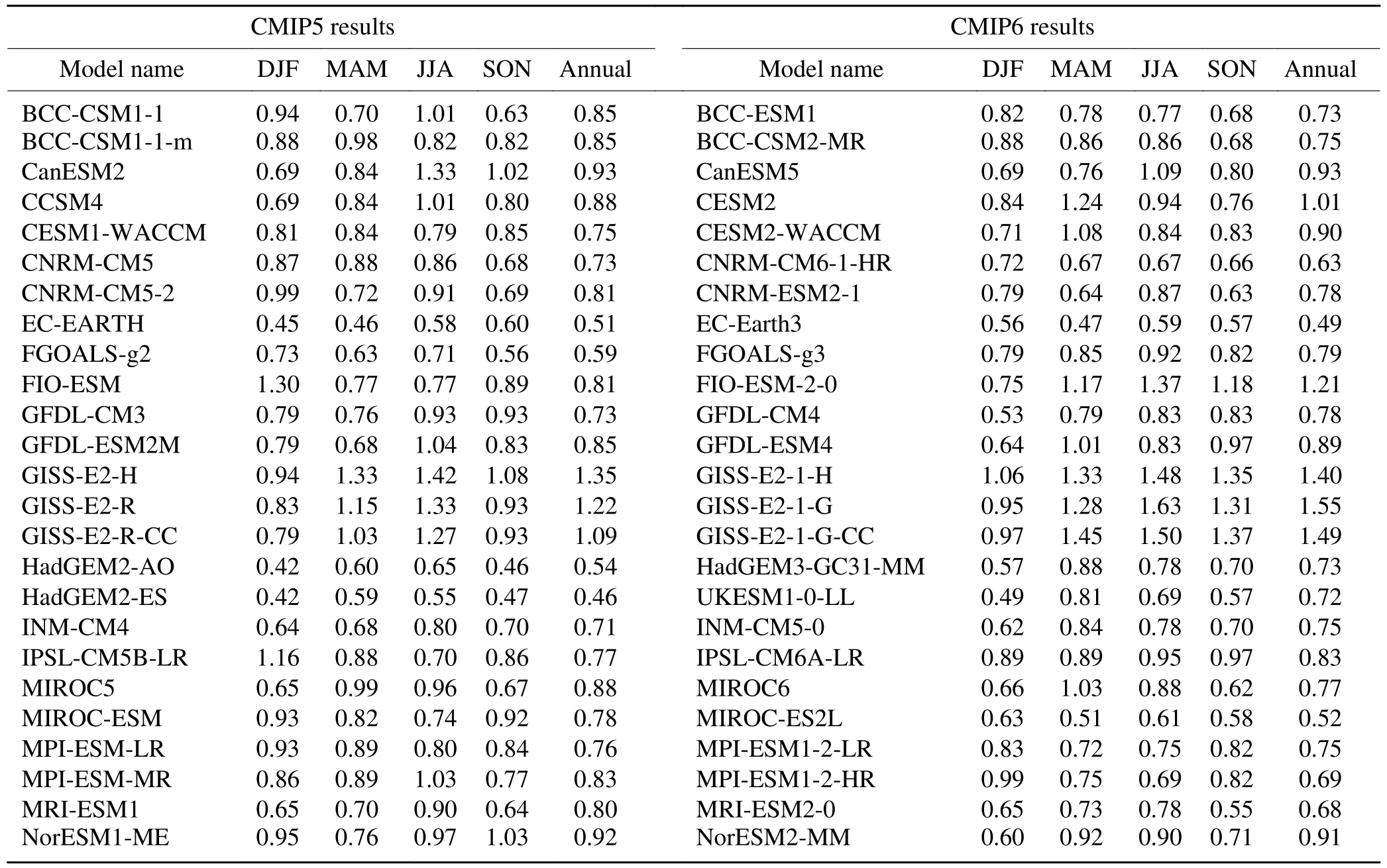
Table S4. Normalized CRMSEs for the interannual variability of annual and seasonal precipitation over China in the 25 CMIP5 GCMs and their CMIP6 successors.
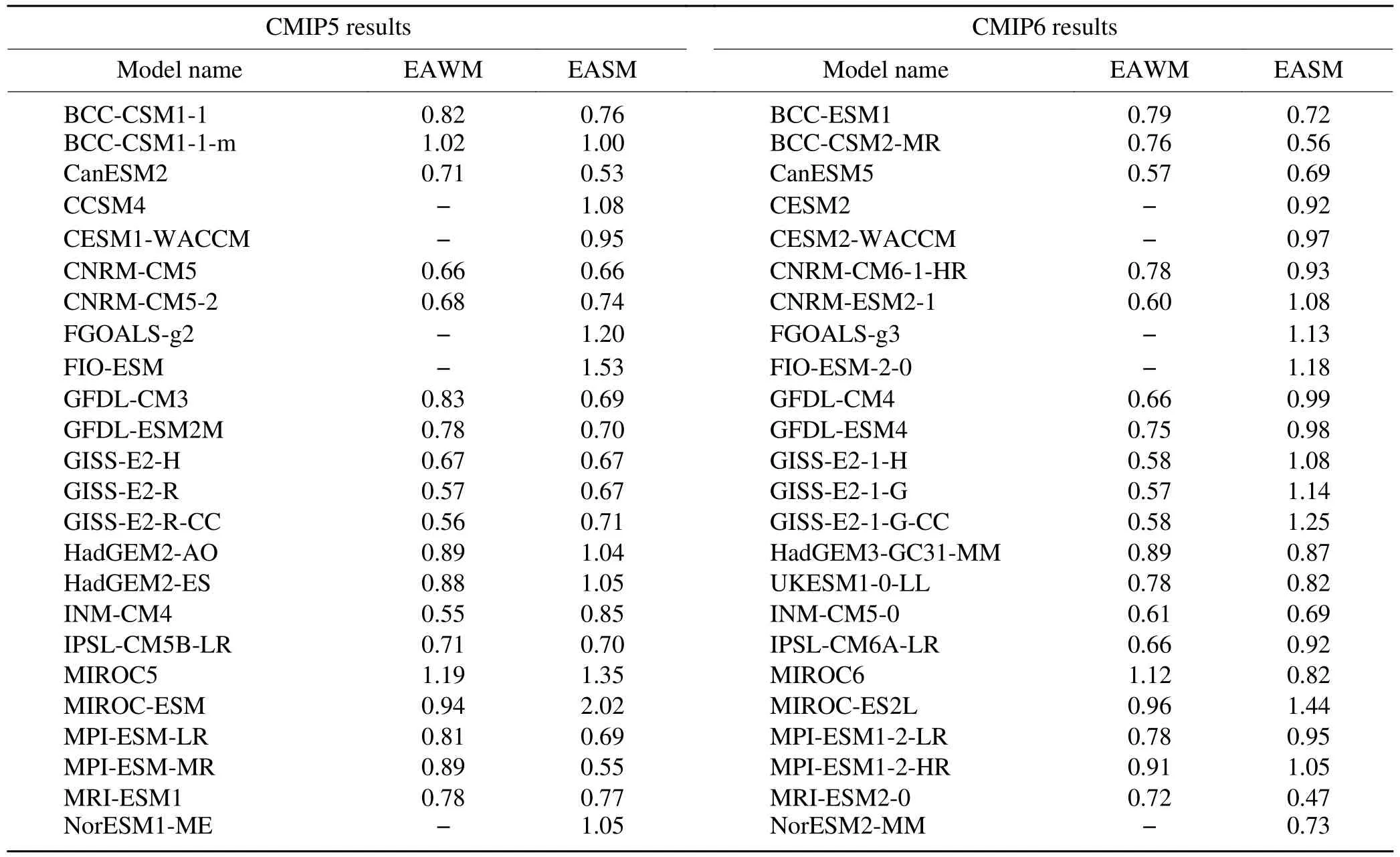
Table S5. Normalized CRMSEs for climatological East Asian winter monsoon (EAWM) and East Asian summer monsoon (EASM) in the 19 and 24 CMIP5 GCMs and their CMIP6 successors, respectively.
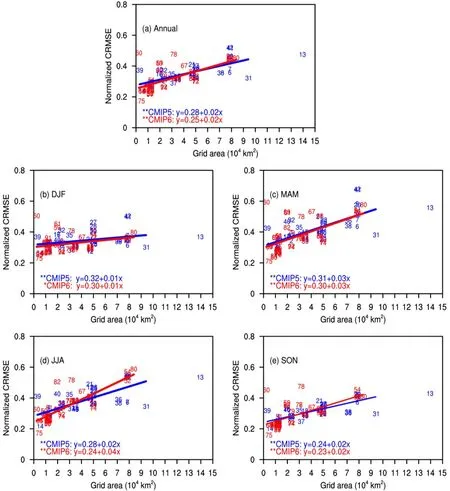
Fig. S1. The vertical axis is the normalized CRMSE of 49 CMIP5 and 43 CMIP6 GCMs against observation for (a)annual, (b) DJF, (c) MAM, (d) JJA, and (e) SON temperatures over China for the period 1961-2005; the horizontal axis is the original grid mesh area averaged over China for the GCMs. Blue and red numbers correspond to the CMIP5 and CMIP6 GCMs as listed in Table 1, respectively. Straight lines represent the least-squares linear fitting with equal weight for all CMIP5 GCMs (except number 13 because that GCM has too coarse a resolution) and CMIP6 GCMs. The fitting equations are shown in the lower corner of the panels, in which * (**) indicates that the correlation relationship is statistically significant at the 90% (95%) confidence level.
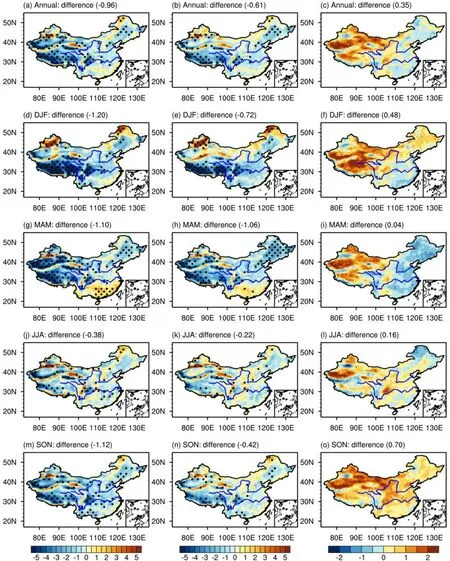
Fig. S2. Climatological annual and seasonal temperatures (unit: °C) over China for the period 1961-2005 as obtained from the difference between the median of 49 CMIP5 GCMs and observation (left column), between the median of 43 CMIP6 GCMs and observation (middle column), and between the median of 43 CMIP6 and 49 CMIP5 GCMs (right column). The regional average value in China is given in parentheses. The two solid blue lines indicate the Yellow River valley in the north and the Yangtze River valley in the south. The dotted areas in the left and middle panels represent regions where at least 80% of the GCMs share the same sign of bias.
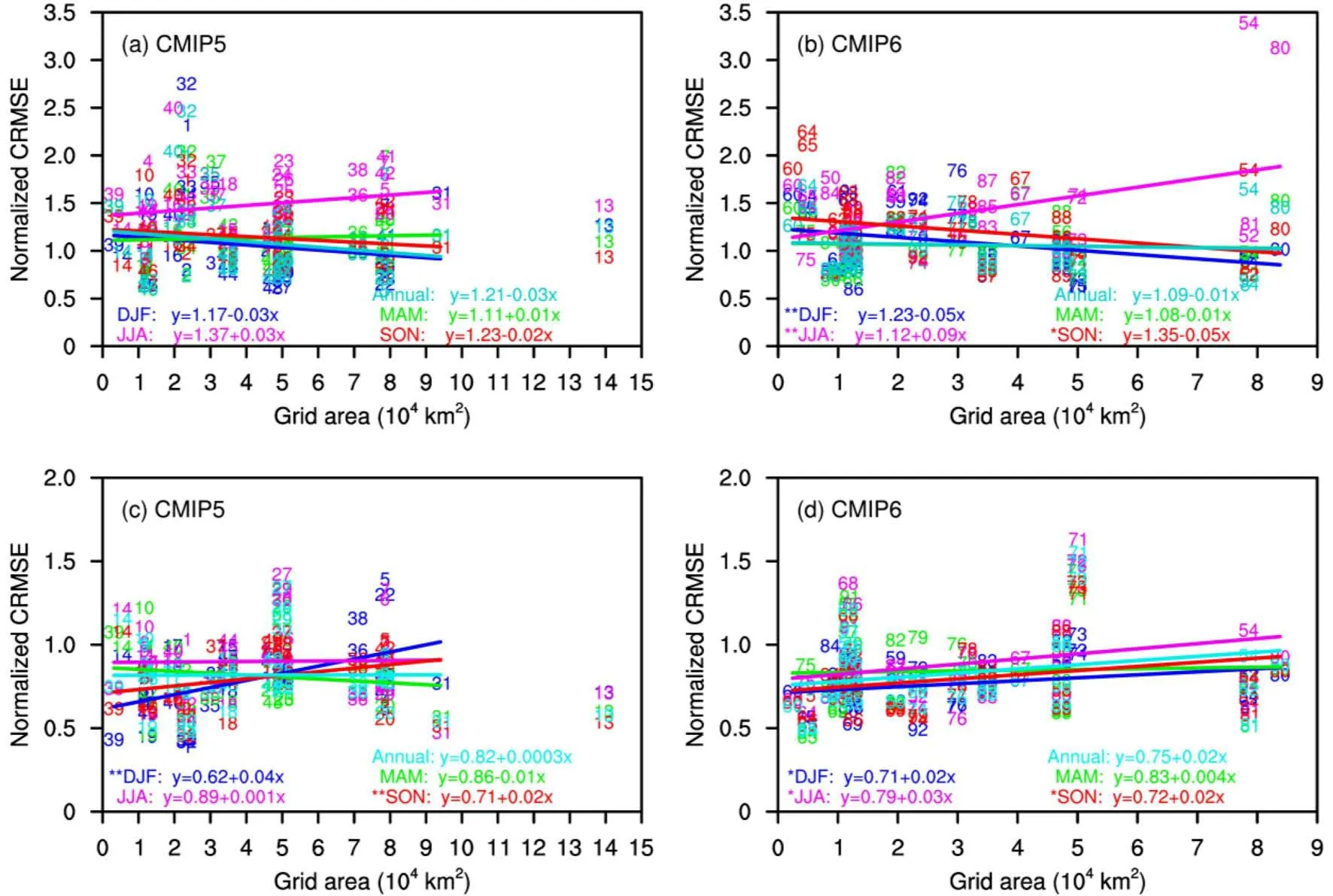
Fig. S3. The vertical axis shows the normalized CRMSE of (a, c) CMIP5 and (b, d) CMIP6 GCMs against observation for the interannual variability of annual and seasonal (a, b) temperatures and (c, d) precipitation over China for the period 1961-2005; the horizontal axis is the original grid mesh area averaged over China for the GCMs. Other aspects are the same as in Fig. 2.

Fig. S4. The vertical axis is the normalized CRMSE of 49 CMIP5 and 43 CMIP6 GCMs against observation for the interannual variability of (a) annual, (b) DJF, (c) MAM, (d) JJA, and (e) SON temperatures over China for the period 1961-2005; the horizontal axis is the original grid mesh area averaged over China for the GCMs. Other aspects are the same as in Fig. S1.

Fig. S5. Interannual variability of annual and seasonal temperatures (unit: °C) over China for the period 1961-2005 as obtained from observation (left column), the median of the 43 CMIP6 GCMs (middle column), and the difference between the median and observation (right column). The regional average value in China and the inter-model standard deviation of the difference averaged over the country (right column, inter-model SD) are given in parentheses. The dotted areas in the right panels represent regions where at least 80% of the GCMs share the same sign of bias.
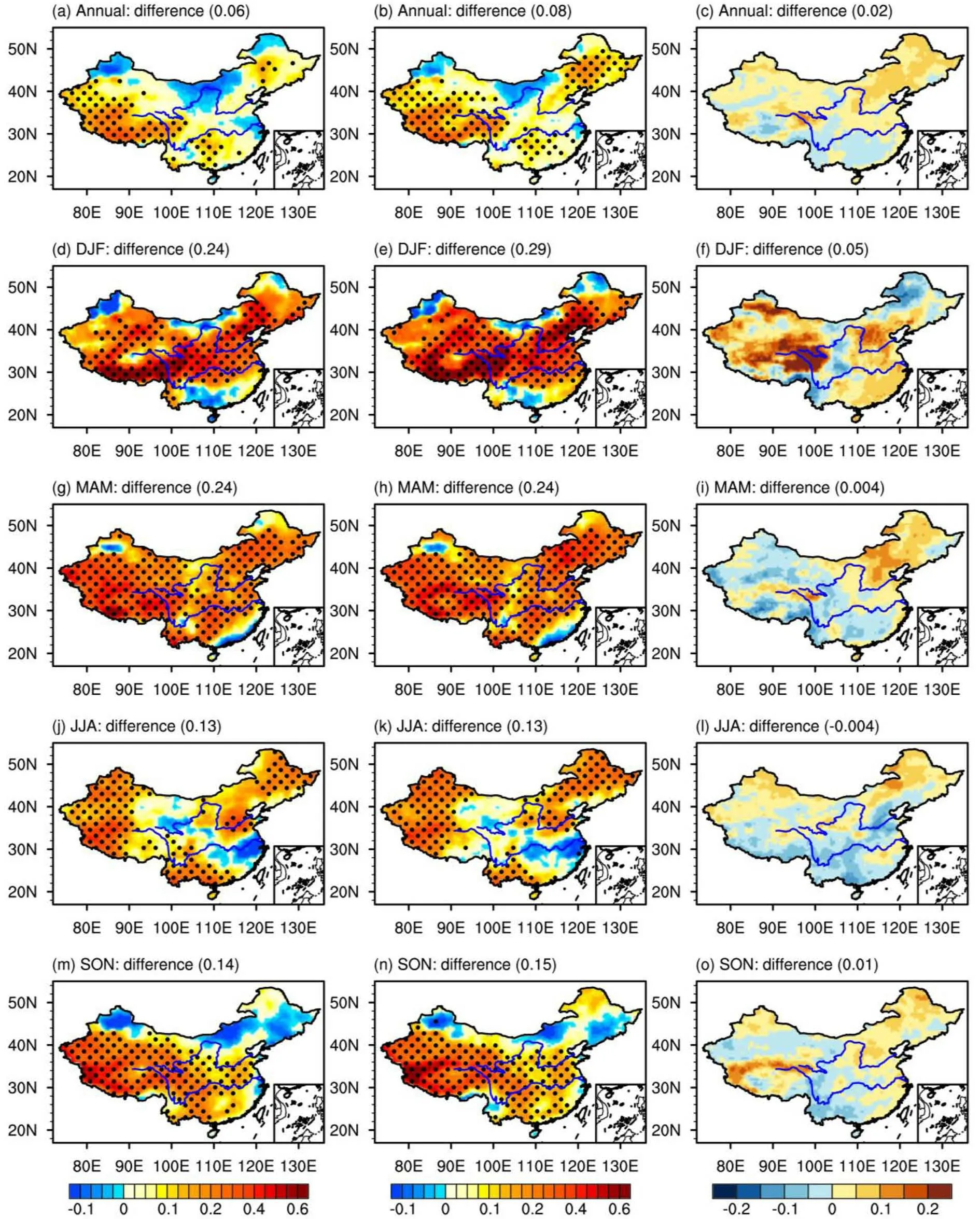
Fig. S6. Interannual variability of annual and seasonal temperatures (unit: °C) over China for the period 1961-2005 as obtained from the difference between the median of 49 CMIP5 GCMs and observation (left column), between the median of 43 CMIP6 GCMs and observation (middle column), and between the median of 43 CMIP6 and 49 CMIP5 GCMs (right column). Other aspects are the same as in Fig. S2.
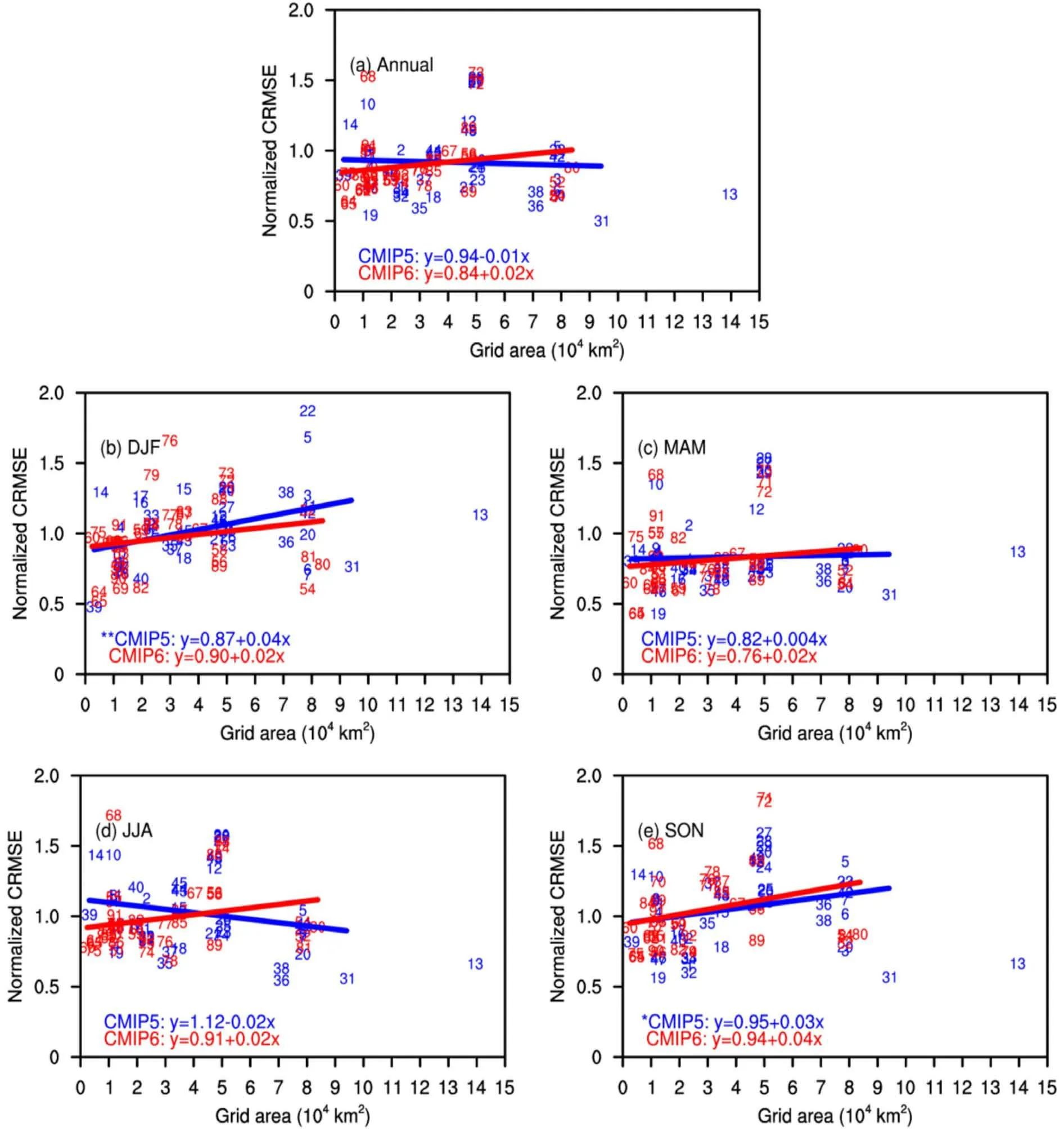
Fig. S7. The vertical axis is the normalized CRMSE of 49 CMIP5 and 42 CMIP6 GCMs against observation for (a) annual,(b) DJF, (c) MAM, (d) JJA, and (e) SON precipitation over China for the period 1961-2005; the horizontal axis is the original grid mesh area averaged over China for the GCMs. Other aspects are the same as in Fig. S1.
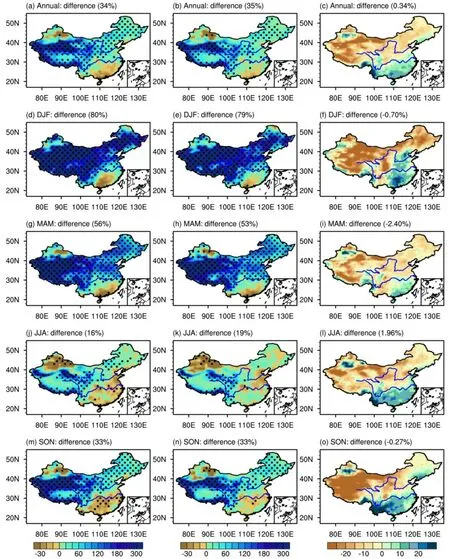
Fig. S8. Climatological annual and seasonal precipitation over China for the period 1961-2005 as obtained from the percentage difference between the median of 49 CMIP5 GCMs and observation (left column), between the median of 42 CMIP6 GCMs and observation (middle column), and between the median of 42 CMIP6 and 49 CMIP5 GCMs (right column). Other aspects are the same as in Fig. S2.

Fig. S9. The vertical axis is the normalized CRMSE of 49 CMIP5 and 42 CMIP6 GCMs against observation for the interannual variability of (a) annual, (b) DJF, (c) MAM, (d) JJA, and (e) SON precipitation over China for the period 1961-2005; the horizontal axis is the original grid mesh area averaged over China for the GCMs. Other aspects are the same as in Fig. S1.

Fig. S10. Interannual variability of annual and seasonal precipitation over China for the period 1961-2005 as obtained from observation (left column; units: mm d-1), the median of the 42 CMIP6 GCMs (middle column; units: mm d-1), and the percentage difference between the median and observation (right column). The regional average value in China and the intermodel standard deviation of the percentage difference averaged over the country (right column, inter-model SD) are given in parentheses. The dotted areas in the right panels represent regions where at least 80% of the GCMs share the same sign of bias.
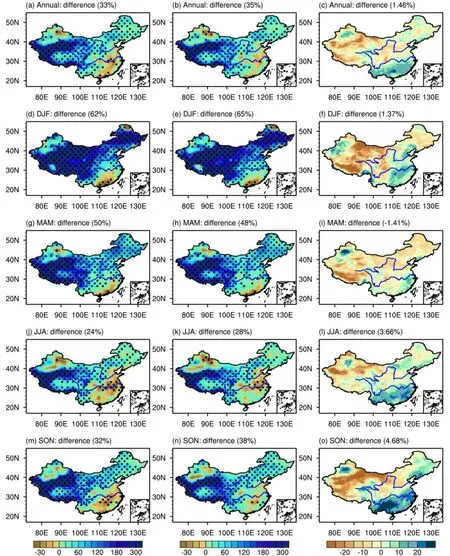
Fig. S11. Interannual variability of annual and seasonal precipitation over China for the period 1961-2005 as obtained from the percentage difference between the median of 49 CMIP5 GCMs and observation (left column), between the median of 42 CMIP6 GCMs and observation (middle column), and between the median of 42 CMIP6 and 49 CMIP5 GCMs (right column). Other aspects are the same as in Fig. S2.
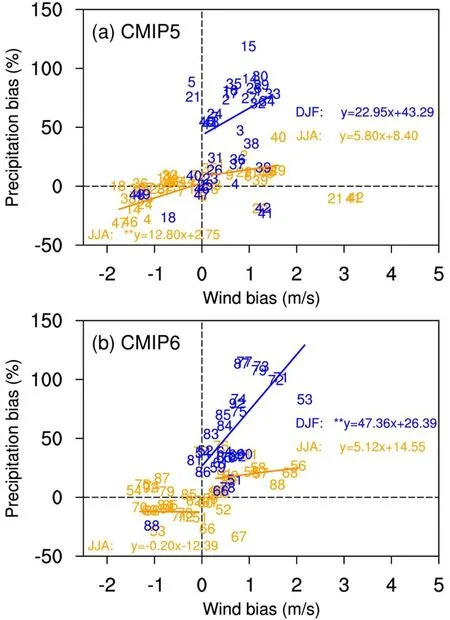
Fig. S13. Bias for meridional winter wind at 10 m averaged within the regions of (25°−40°N, 120°−140°E) and(10°−25°N, 110°−130°E) (blue) and summer wind at 850 hPa within the region of (20°−40°N, 105°−120°E) (orange) versus precipitation averaged within the region 105°E east of China between (a) 40 and 48 CMIP5 or (b) 31 and 41 CMIP6 GCMs and observation, respectively. Numbers indicate GCMs listed in Table 1. Solid lines represent the linear fitting for GCMs,with blue lines for both positive bias in winter wind and precipitation for (a) 30 CMIP5 and (b) 28 CMIP6 GCMs, and orange lines for both positive (negative) bias in summer wind and precipitation for (a) 15 (16) CMIP5 and (b) 14 (12)CMIP6 GCMs, respectively. The fitting equations are shown on the figure, and the linear trend significant at the 95%(99%) confidence level is shown as * (**).
杂志排行
Advances in Atmospheric Sciences的其它文章
- CAS-FGOALS Datasets for the Two Interglacial Epochs of the Holocene and the Last Interglacial in PMIP4
- FIO-ESM v2.0 Outputs for the CMIP6 Global Monsoons Model Intercomparison Project Experiments
- Overview of the CMIP6 Historical Experiment Datasets with the Climate System Model CAS FGOALS-f3-L
- Eddy-resolving Simulation of CAS-LICOM3 for Phase 2 of the Ocean Model Intercomparison Project
- CAS FGOALS-g3 Model Datasets for the CMIP6 Scenario Model Intercomparison Project (ScenarioMIP)
- FGOALS-g3 Model Datasets for CMIP6 Flux-Anomaly-Forced Model Intercomparison Project
